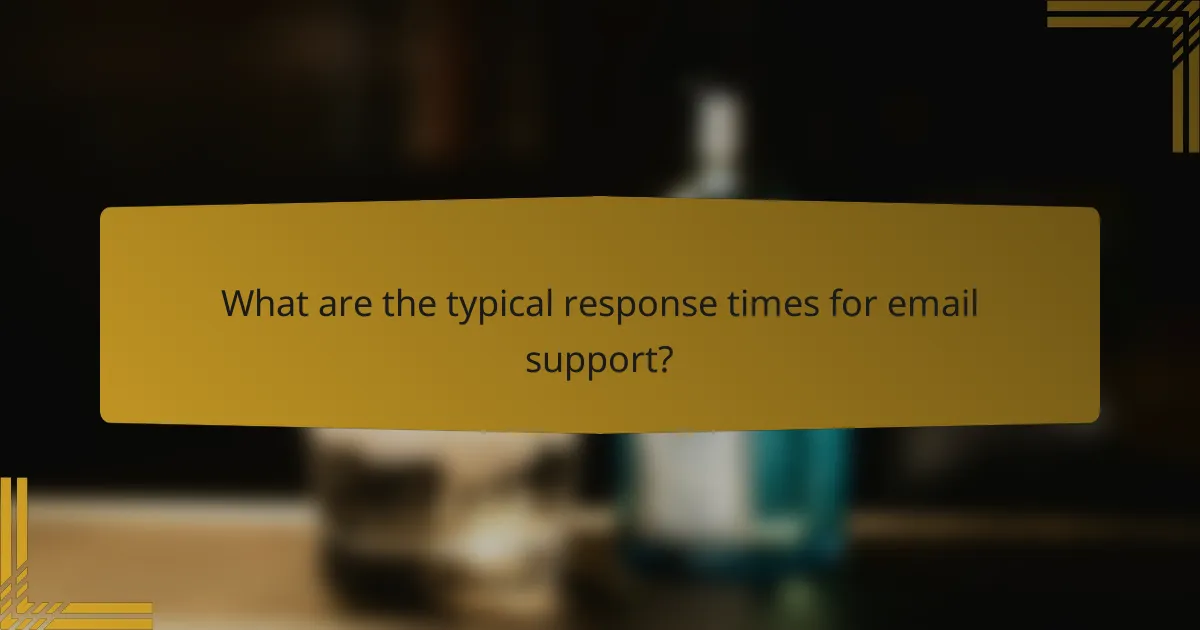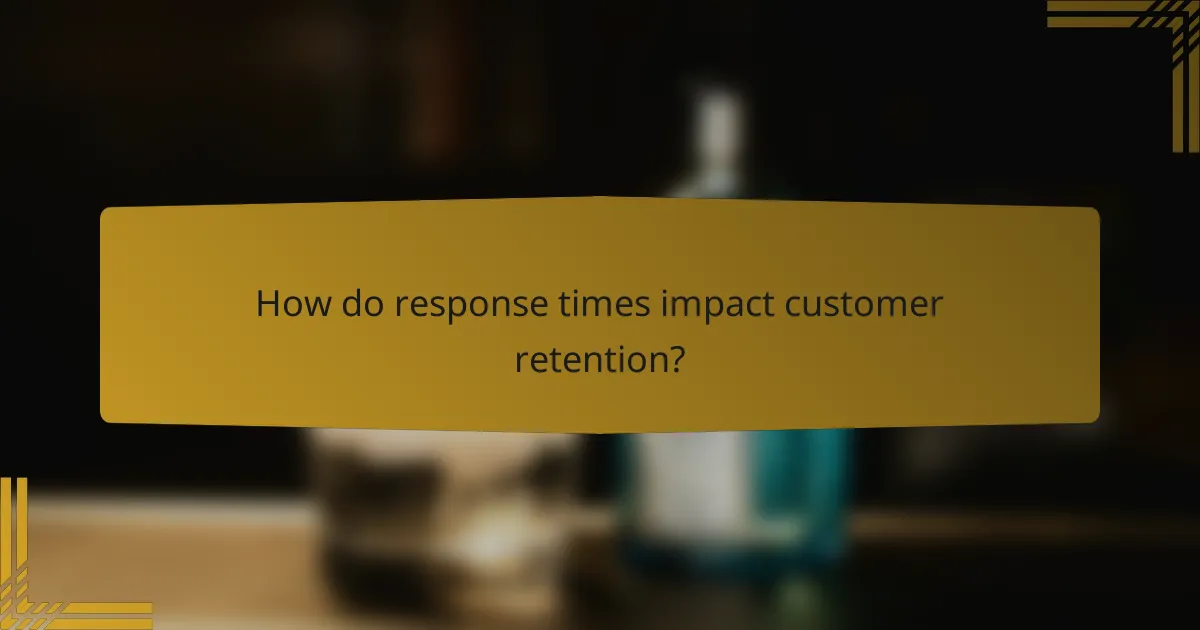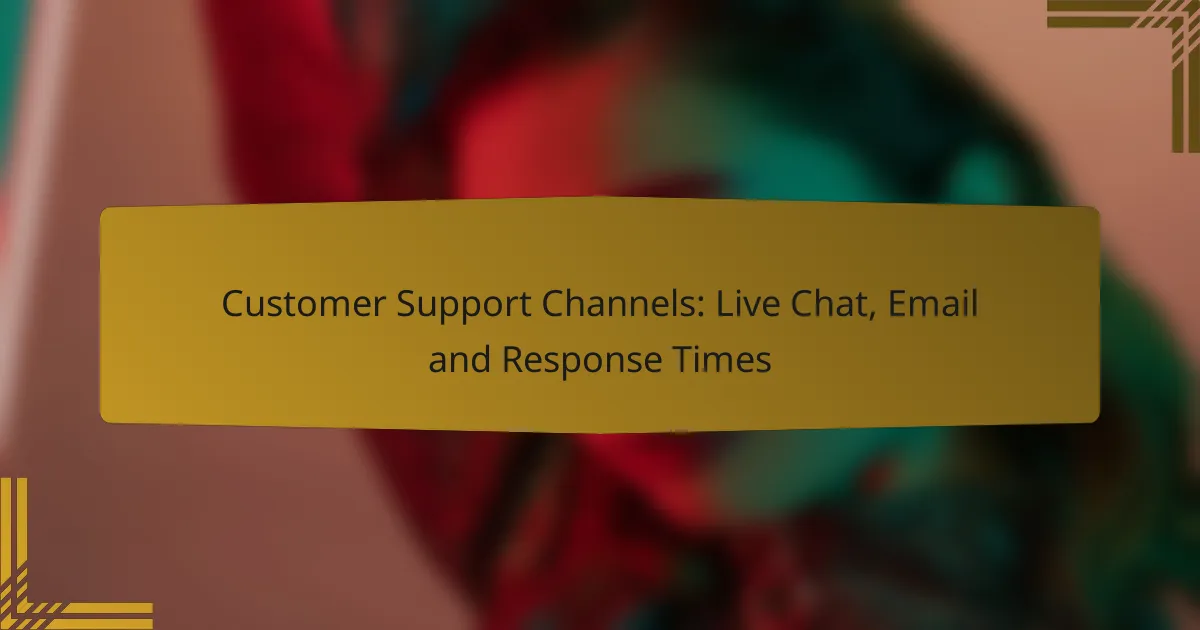In today’s competitive landscape, effective customer support channels such as live chat, email, and phone support play a crucial role in enhancing customer satisfaction. Each channel offers distinct benefits, with live chat providing immediate assistance and personalized interactions, while email support typically aims for response times of 24 to 48 hours. Understanding these channels and their response dynamics can significantly influence customer experiences and brand loyalty.

What are the best customer support channels in Canada?
The best customer support channels in Canada include live chat, email, and phone support. Each channel offers unique advantages and can significantly impact customer satisfaction based on response times and user preferences.
Live Chat advantages
Live chat provides immediate assistance, allowing customers to receive answers in real-time. This channel is particularly effective for quick inquiries and troubleshooting, often resulting in higher satisfaction rates.
Additionally, live chat can handle multiple conversations simultaneously, making it a cost-effective option for businesses. It also allows for easy integration with websites, enhancing user experience.
Email support benefits
Email support is ideal for more complex issues that require detailed explanations or documentation. Customers can send inquiries at their convenience and receive responses without the pressure of immediate interaction.
This channel allows for thorough responses and can be tracked easily, providing a record of communication. However, it typically has longer response times compared to live chat.
Response time comparisons
Response times vary significantly between live chat and email support. Live chat often delivers responses within seconds to a few minutes, while email responses can take several hours or even days, depending on the company’s policies.
For optimal customer experience, businesses should aim for response times under 5 minutes for live chat and within 24 hours for email. Monitoring these metrics can help improve service quality and customer satisfaction.

How does live chat improve customer satisfaction?
Live chat significantly enhances customer satisfaction by providing immediate assistance and personalized interactions. This real-time communication channel allows customers to resolve issues quickly, leading to a more positive experience with the brand.
Instant responses
One of the primary benefits of live chat is its ability to deliver instant responses to customer inquiries. Unlike email, where replies can take hours or even days, live chat typically offers answers within seconds or low tens of seconds. This rapid response time helps to minimize customer frustration and keeps them engaged.
To maximize the effectiveness of live chat, businesses should ensure that their agents are well-trained and equipped to handle common queries efficiently. Implementing chatbots for basic questions can further enhance response times, allowing human agents to focus on more complex issues.
Increased engagement
Live chat fosters increased engagement by allowing customers to interact with a representative in real-time. This immediacy encourages customers to ask questions and seek clarification, which can lead to higher conversion rates and improved customer loyalty. Engaged customers are more likely to return and recommend the service to others.
To boost engagement, companies should proactively initiate chats with website visitors, especially those who spend significant time on product pages. Offering personalized greetings or assistance can create a welcoming atmosphere that encourages customers to interact more freely.

What are the typical response times for email support?
Typical response times for email support can vary widely, but many companies aim to respond within 24 to 48 hours. Some organizations may offer faster responses, while others may take longer depending on their resources and policies.
Industry standards
In the customer support industry, a common benchmark is a response time of 24 hours for non-urgent inquiries. Many businesses strive to achieve this standard to maintain customer satisfaction. However, some sectors, like e-commerce, may see quicker responses, often within a few hours.
Factors affecting response times
Several factors can influence email response times, including the volume of inquiries received, the complexity of the issues, and the staffing levels of the support team. For instance, during peak seasons, such as holidays, response times may increase due to higher demand.
Additionally, the use of automated systems can help streamline responses for common questions, potentially reducing wait times. However, more complex issues may require longer to resolve, impacting overall response time. It’s essential for customers to set realistic expectations based on these factors.

How do response times impact customer retention?
Response times play a crucial role in customer retention by directly influencing customer satisfaction and loyalty. Faster response times typically lead to higher satisfaction levels, which can significantly enhance the likelihood of customers returning for future purchases.
Correlation with satisfaction
There is a strong correlation between response times and customer satisfaction. When customers receive prompt replies, they feel valued and understood, which fosters a positive experience. Studies show that response times of under a few minutes can lead to satisfaction rates exceeding 80%.
Conversely, delays in responses can frustrate customers, leading to negative perceptions of a brand. A response time exceeding 24 hours is often considered unacceptable in today’s fast-paced market, potentially driving customers to competitors.
Retention strategies
To improve retention, businesses should implement strategies that prioritize quick response times across all customer support channels. Utilizing live chat can significantly reduce wait times compared to email, as customers often prefer immediate assistance.
Additionally, setting clear expectations for response times and providing regular updates can enhance customer trust. For instance, informing customers that they will receive a reply within a specific timeframe can mitigate frustration and improve overall satisfaction.

What criteria should businesses consider when choosing support channels?
Businesses should evaluate customer support channels based on their target audience, integration capabilities, and response time expectations. Each channel has unique advantages and trade-offs that can impact customer satisfaction and operational efficiency.
Target audience preferences
Understanding the preferences of your target audience is crucial when selecting support channels. For instance, younger customers may favor live chat for its immediacy, while older clients might prefer email for its formality and convenience.
Conducting surveys or analyzing customer behavior can provide insights into preferred communication methods. Aim to offer multiple channels to accommodate diverse preferences, ensuring a better overall customer experience.
Integration with existing tools
Choosing support channels that integrate seamlessly with your existing tools can enhance efficiency and streamline operations. For example, if your business uses a CRM system, select chat or email solutions that can sync customer interactions directly into that system.
Evaluate the compatibility of potential support channels with your current technology stack. This can reduce training time for staff and improve the speed of customer service, ultimately leading to higher satisfaction rates.

What are the emerging trends in customer support channels?
Emerging trends in customer support channels focus on enhancing efficiency and customer satisfaction through innovative technologies and strategies. Key developments include the use of AI-driven chatbots, omnichannel support, and personalized interactions, all aimed at improving response times and overall service quality.
AI-driven chatbots
AI-driven chatbots are increasingly used to handle customer inquiries in real-time, providing instant responses to common questions. These chatbots can operate 24/7, significantly reducing wait times and freeing human agents to tackle more complex issues.
When implementing chatbots, businesses should ensure they are well-trained to understand customer queries and provide accurate information. Regular updates and monitoring are essential to maintain their effectiveness and adapt to changing customer needs.
Omnichannel support strategies
Omnichannel support strategies integrate various communication channels, such as live chat, email, and social media, to provide a seamless customer experience. This approach allows customers to switch between channels without losing context, which can enhance satisfaction and loyalty.
To effectively implement an omnichannel strategy, companies should invest in systems that track customer interactions across all platforms. This ensures that agents have access to complete customer histories, enabling them to provide informed and personalized assistance.
Personalization in customer interactions
Personalization in customer interactions involves tailoring responses and support based on individual customer data and preferences. This trend is driven by the desire to create more meaningful connections and improve customer satisfaction.
Businesses can achieve personalization by utilizing customer relationship management (CRM) tools to gather and analyze data. Simple actions, like addressing customers by their names or recalling past interactions, can significantly enhance the customer experience and foster loyalty.
